|
Users Online
· Guests Online: 2
· Members Online: 0
· Total Members: 4,945
· Newest Member: millenin
Forum Threads
Theme Switcher
Last Seen Users
Latest Photo Additions
|
Terms Infusion (Glossary) - v3.10
|
B |
| basal |
The adjective base![header=[base] body=[The part nearest to the point of attachment or the attached part of something relative to the (imaginary) center of the body. For example, the start of the wing (base of the wing), the abdomen (base of the abdomen), the tibia (base of the tibia), etc.<br />
For some structures, the use of this term can cause considerable confusion. Since the thorax will generally be considered the (imaginary) center of the body, the anterior margin (near the head) could be considered the base. Yet, in some (little used) interpretations the transition between thorax and abdomen is considered the (imaginary) center of the body, and in that case the part of the thorax that is joined with the abdomen should be considered the base. So, for the thorax it is recommended to avoid the use of this term.<br /><img src='../../infusions//terms/images/no_image.gif' style='vertical-align:middle;' />] delay=[0] fade=[on]](../../infusions/terms/images/help.gif) . Example: 'Arista . Example: 'Arista![header=[Arista] body=[The Glossary contains no matching items.<br />It may have been added using different lettering,<br />so you can click the Term to check this.<br />Otherwise, contact the Administrator to report this error.<br /><img src='../../infusions//terms/images/no_image.gif' style='vertical-align:middle;' />] delay=[0] fade=[on]](../../infusions/terms/images/help.gif) commonly plumose on basal half' means that the half of the arista which arises from the third antennal segment is plumose. Opposite of apical commonly plumose on basal half' means that the half of the arista which arises from the third antennal segment is plumose. Opposite of apical![header=[apical] body=[The adjective of apex. Example: 'Arista commonly bare on apical half' means that the second half of the arista (starting from the third antennal segment) is bare. Opposite of basal.<br /><img src='../../infusions//terms/images/no_image.gif' style='vertical-align:middle;' />] delay=[0] fade=[on]](../../infusions/terms/images/help.gif) . . | | base |
The part nearest to the point of attachment or the attached part of something relative to the (imaginary) center of the body. For example, the start of the wing (base of the wing), the abdomen (base of the abdomen), the tibia (base of the tibia), etc.
For some structures, the use of this term can cause considerable confusion. Since the thorax will generally be considered the (imaginary) center of the body, the anterior margin (near the head) could be considered the base. Yet, in some (little used) interpretations the transition between thorax and abdomen is considered the (imaginary) center of the body, and in that case the part of the thorax that is joined with the abdomen should be considered the base. So, for the thorax it is recommended to avoid the use of this term. | | basicalypter |
| lower calypter (synonym) | | basicosta |
The distal one of the two plates in the axillary area of the wing along which the costa of the wing articulates. The tegula![header=[tegula] body=[The proximal one of the two plates in the axillary area of the wing located at the extreme base of the costal margin. The basicosta is the distal one.<br />
Synonym: epaulet.<br />
Image given: hthttp://www.dgrc.kit.ac.jp/~jdd/subwin/wingbase/wb_tegula.gif<br /><img src='http://www.diptera.info/infusions/terms/images/wb_tegula.gif' style='vertical-align:middle;' />] delay=[0] fade=[on]](../../infusions/terms/images/help.gif) is the proximal one. is the proximal one.
Synonyms: humeral plate, subepaulet.
Image given: http://www.dgrc.k..._plate.gif | 
| | basitarsus |
| first tarsomere (synonym) | | bibliographic reference |
For nomenclatural purposes this is the citation of the author and date of publication. A full bibliographic reference would include, in addition to the author's name and the year, the citation of the exact source of the scientific name, for example, the title of the book or journal, volume, page, etc.: Syrphus vitripennis Meigen, 1822 (Meig. Syst. Beschr. III, 308, 50).
| | binominal nomenclature |
The generally accepted system of nomenclature, adopted by the International Congress of Zoology, by which the scientific name of an animal is designated by both a generic and a specific name: the system under which each species receives a name consisting of two words, of which the first is the generic name and the second is the specific name, e.g., Musca domestica.
Links: International Commission on Zoological Nomenclature.
| | biosystematics |
Biosystematics is the word for the science encompassing taxonomy, systematics, biology, ecology and spatial and geographical distribution. It provides information to support many fields of (biological) research and beneficial applied programmes.
Links: http://www.tc-bio...xpage1.htm. | | biserial |
| In two rows | | black scavenger flies |
Vernacular name used for the family Sepsidae.
Links: http://en.wikiped...i/Sepsidae.
| | black soldier fly |
Vernacular name for Hermetia illucens (Stratiomyidae).
Links: http://en.wikiped...a_illucens. | | blow flies |
Vernacular name used for the family Calliphoridae, but sometimes restricted to the type genus Calliphora.
Links: http://en.wikiped...i/Blow-fly. | | boreal |
1. As in 'boreal species': A species occuring in subarctic (Northern hemisphere) and subantarctic (Southern hemisphere) zones, although Austral is the preferred term for the latter. For example: the distribution of Dolichopus maculipennis Zett. is given as "arctic-high boreal" by Ringdahl (1951) and as "a boreal moorland species" from the Soviet Union, Finland, Sweden, Norway and Denmark by Stackleberg (1933).
2. As in 'boreal' region, habitat or system: Subarctic ecosystems (Northern hemisphere).
| | brachypterous |
With short wings, short-winged. See brachyptery![header=[brachyptery] body=[A condition where the size of the wing is reduced in comparison with a normally winged specimen. A distinction should be made between 'small-winged' species, that always have short, but fully functional wings, and brachypterous species, in which wing size in some or all individuals has been reduced to such an extent that flight is impossible.<br />
Brachyptery is often found in species that have a parasitic, terrestrial or even subterranean life style or that are found in other circumstances where wings are of little uses (e.g., boreal conditions or locations without natural enemies like some oceanic islands).<br />
Within certain species fully-winged individuals may occur next to brachypterous individuals and/or apterous individuals.<br /><img src='../../infusions//terms/images/no_image.gif' style='vertical-align:middle;' />] delay=[0] fade=[on]](../../infusions/terms/images/help.gif) . . | | brachyptery |
A condition where the size of the wing is reduced in comparison with a normally winged specimen. A distinction should be made between 'small-winged' species, that always have short, but fully functional wings, and brachypterous species, in which wing size in some or all individuals has been reduced to such an extent that flight is impossible.
Brachyptery is often found in species that have a parasitic, terrestrial or even subterranean life style or that are found in other circumstances where wings are of little uses (e.g., boreal conditions or locations without natural enemies like some oceanic islands).
Within certain species fully-winged individuals may occur next to brachypterous individuals and/or apterous![header=[apterous] body=[Without wings, wingless. See aptery.<br /><img src='../../infusions//terms/images/no_image.gif' style='vertical-align:middle;' />] delay=[0] fade=[on]](../../infusions/terms/images/help.gif) individuals. individuals. | | bristle |
| seta (synonym) |
|
|
| Date and time
Login
Forgotten your password? Request a new one here.
Temporary email?
Due to fact this site has functionality making use of your email address, any registration using a temporary email address will be rejected. Paul
Donate
Latest Articles
Syrph the Net
Those who want to have access to the Syrph the Net database need to sign the
License Agreement -
Click to Download
Public files of Syrph the Net can be downloaded HERE
Last updated: 25.08.2011
Shoutbox
You must login to post a message.
|


 but don't see the image in the post.
but don't see the image in the post.

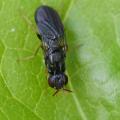



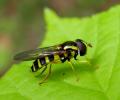
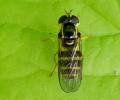

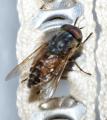
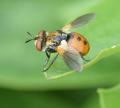

![header=[base] body=[The part nearest to the point of attachment or the attached part of something relative to the (imaginary) center of the body. For example, the start of the wing (base of the wing), the abdomen (base of the abdomen), the tibia (base of the tibia), etc.<br />
For some structures, the use of this term can cause considerable confusion. Since the thorax will generally be considered the (imaginary) center of the body, the anterior margin (near the head) could be considered the base. Yet, in some (little used) interpretations the transition between thorax and abdomen is considered the (imaginary) center of the body, and in that case the part of the thorax that is joined with the abdomen should be considered the base. So, for the thorax it is recommended to avoid the use of this term.<br /><img src='../../infusions//terms/images/no_image.gif' style='vertical-align:middle;' />] delay=[0] fade=[on]](../../infusions/terms/images/help.gif)
